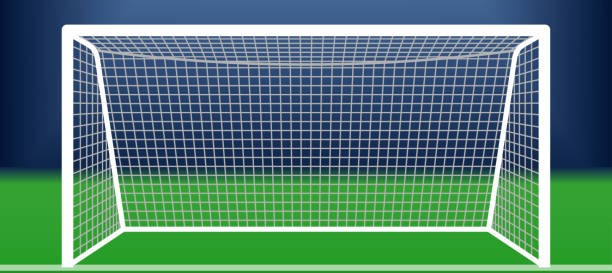













OFFSIDE.

In football, the offside rule is one of the most fundamental yet sometimes confusing rules. It is designed to prevent players
from "goal-hanging" or waiting near the opponent's goal without actively participating in the build-up of the attack. The rule
ensures fairness by requiring players to be involved in the play rather than just positioning themselves to exploit defensive
lapses.
What is Offside?
- A player is offside if, at the moment the ball is passed to them by a teammate, they are:
▫ Closer to the opponent's goal line than both the ball and the second-last defender (typically the last defender is the
goalkeeper, but not always)
▫ Actively involved in play by interfering with the play, interfering with an opponent, or gaining an advantage from
being in that position.
Key Conditions for Offside: For a player to be ruled offside, three key conditions must be met simultaneously:
Player’s Position:
- ▫ The player is closer to the opponent's goal than both the ball and the second-last defender when the ball is played to them.
- ▫ A player is only considered offside if they are in the opponent’s half of the field when the ball is passed.
Active Involvement in Play:
- A player can only be penalized for being offside if they are actively involved in the play, which includes:
▫ Interfering with play: Directly playing the ball or making an attempt to play the ball.
▫ Interfering with an opponent: Preventing an opponent from playing the ball or obstructing their line of vision.
▫ Gaining an advantage: Receiving the ball after it rebounds off the goalpost, crossbar, or an opponent.
The Timing of the Pass:
- ▫ The offside position is judged the moment the ball is played to the player, not when the player receives the ball. A player can
be behind the defenders when they receive the ball as long as they were onside at the moment the pass was made.
Situations Where Offside Does Not Apply:
- There are several situations where a player cannot be considered offside, even if they are in an offside position when the ball is
played:
▫ Goal Kick: A player cannot be offside directly from a goal kick.
▫ Throw-in: A player cannot be offside from a throw-in.
▫ Corner Kick: Offside does not apply when the ball is played from a corner kick.
▫ In Their Own Half: A player cannot be offside if they are in their own half of the field when the ball is played.
Offside Example Scenarios:
- ▫ PLAYER ONSIDE: A forward receives a pass and is behind the last defender when they get the ball, but at the moment the pass was made,
they were level with the second-last defender. In this case, the player is onside.
- ▫ PLAYER OFFSIDE: A striker is standing in front of the second-last defender when the ball is passed. At the moment the ball is played
to them, they are closer to the goal than both the ball and the second-last defender, so they are in an offside position.
Consequences of Offside:
- ▫ When a player is ruled offside, the opposing team is awarded an indirect free kick from the spot where the offside occurred. Unlike
direct free kicks, a goal cannot be scored directly from an indirect free kick unless it touches another player before entering the
goal
Role of Assistant Referees and VAR:
- ▫ Assistant Referees: The assistant referee (the linesman) is responsible for determining offside by keeping their eyes on both the
last defender and the attacker at the moment the ball is played. If they see an offside infringement, they raise their flag to signal to
the referee.
- ▫ VAR (Video Assistant Referee): In modern football, VAR can review tight offside decisions, especially for goal-scoring opportunities.
If the offside call is unclear or too close to judge, VAR can provide a review to ensure the correct decision is made.
Tactical Use of Offside: Teams often use the offside rule to their advantage in several ways:
- ▫ OFFSIDE TRAP: Defending teams sometimes employ an offside trap, a tactic where defenders move upfield together just before the ball
is passed, intentionally leaving the attacking players in an offside position. This requires excellent coordination and timing from the
defense to avoid mistakes.
- ▫ BEATING THE OFFSIDE TRAP: Attackers can try to exploit gaps in the defense by timing their runs so they are still onside when the
ball is passed. Forwards often practice making quick runs behind the defense to receive through balls at the right moment.
Common Misconceptions About Offside:
- ▫ You cannot be offside in your own half: A player must be in the opponent’s half of the field for the offside rule to apply.
- ▫ Level with the second-last defender is onside: A player is not offside if they are level with the second-last defender when the ball is
played.
- ▫ Offside does not apply if the player is not involved in the play: If a player in an offside position does not touch the ball or
interfere with play or an opponent, they are not penalized.
Modern Offside Rules and VAR:
- ▫ In recent years, the offside rule has been refined to make decisions clearer, and technology like VAR has helped ensure more
accurate calls. However, there can still be tight and controversial decisions, particularly involving the player’s body positioning
(e.g., a foot or shoulder being just ahead of the defender).
Summary of the Offside Rule in Football:
- ▫ A player is offside if they are closer to the opponent's goal than the ball and the second-last defender when the ball is passed
to them.
- ▫ The player must be actively involved in the play to be penalized.
- ▫ Offside doesn’t apply from goal kicks, throw-ins, or corner kicks.
- ▫ If a player is offside, the opposing team is awarded an indirect free kick.
- ▫ Referees and assistant referees, with help from VAR, ensure the correct application of the offside rule during games.
By understanding the offside rule and its nuances, players and fans can better appreciate the tactical and strategic elements involved
in attacking and defending in football.




























